Nobel Prize for missing piece in neutrino mass puzzle (Update)
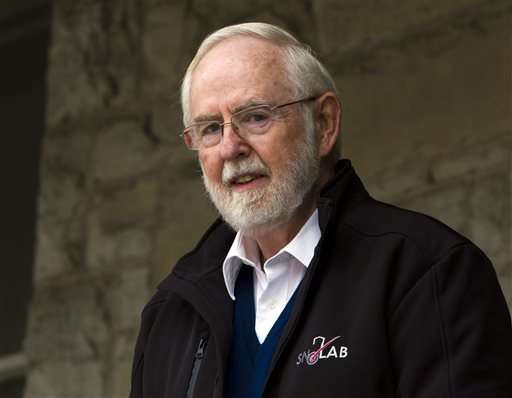
Two scientists won the Nobel Prize in physics Tuesday for key discoveries about a cosmic particle that whizzes through space at nearly the speed of light, passing easily through Earth and even your body.
Takaaki Kajita of Japan and Arthur McDonald of Canada were honored for showing that these tiny particles, called neutrinos, have mass. That's the quality we typically experience as weight.
"The discovery has changed our understanding of the innermost workings of matter and can prove crucial to our view of the universe," the Royal Swedish Academy of Sciences said in awarding the prize.
The work dispelled the long-held notion that neutrinos had no mass.
Neutrinos come in three types, or "flavors," and what the scientists actually showed is that neutrinos spontaneously shift between types. That in turn means they must have mass.
Kajita, 56, is director of the Institute for Cosmic Ray Research and professor at the University of Tokyo. McDonald, 72, is a professor emeritus at Queen's University in Kingston, Ontario.
McDonald told reporters in Stockholm by phone that the discovery helped scientists fit neutrinos into theories of fundamental physics.
Kajita, who initially told a news conference at his university that "my mind has gone completely blank. I don't know what to say," went on to stress that many people had contributed to his work.
"The universe where we live in is still full of unknowns," he said. "A major discovery cannot be achieved in a day or two. It takes a lot of people and a long time."
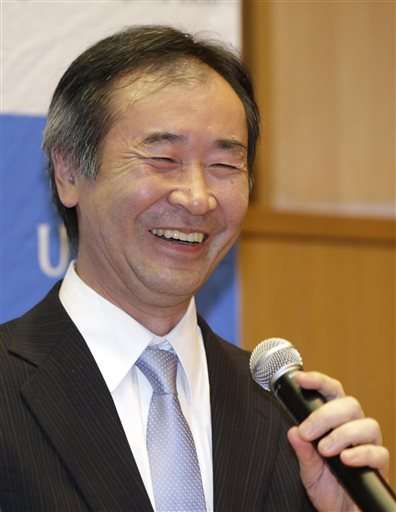
The existence of neutrinos was first proven in 1956. They come from a variety of sources in the cosmos, on Earth and in Earth's atmosphere. Most that reach Earth were created by nuclear reactions inside the sun. Trillions pass through your body every second.
Kajita showed in 1998 that neutrinos created in Earth's atmosphere and captured at the Super-Kamiokande detector in Japan had changed "flavors." Three years later, while working at Canada's Sudbury Neutrino Observatory, McDonald found that neutrinos coming from the sun also switched identities.
"It changes our understanding of the fundamentals of particle physics, and particles make up everything in the universe," said Robert G.W. Brown, chief executive officer of the American Institute of Physics.
Antonio Ereditato, director of the Albert Einstein Center for Fundamental Physics at the University of Bern, Switzerland, declared, "This is really one of the milestones in our understanding of nature."
The findings "really inspired a whole global community of scientists to drop what they were doing and try to understand the neutrino," said Joseph Lykken, deputy director of the Fermi National Accelerator Laboratory in Batavia, Illinois.
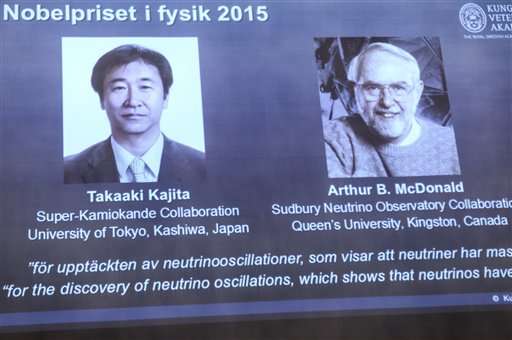
Still unknown: Just how much do neutrinos weigh?
"Neutrinos are a million times lighter than an electron, which is a charged version of a neutrino," said Guido Drexlin, a neutrino expert at the Karlsruhe Institute of Technology in Germany. Determining their weight is something his team hopes to start working on next year.
The Nobel winners will split the 8 million Swedish kronor (about $960,000) prize money. Each winner also gets a diploma and a gold medal at the prize ceremony on Dec. 10.
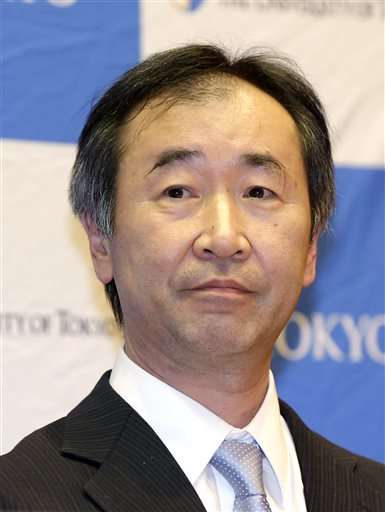
On Monday, the Nobel Prize in medicine went to scientists from Japan, the U.S. and China who discovered drugs that are now used to fight malaria and other tropical diseases.
The prize announcements continue with chemistry on Wednesday, literature on Thursday, the Nobel Peace Prize on Friday and the economics award next Monday.
-
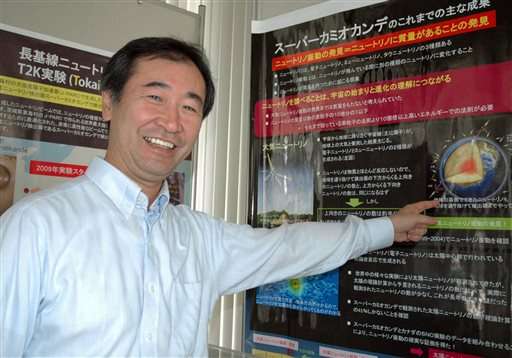
This Sept. 2011 photo shows Takaaki Kajita of Japan, director of the Institute for Cosmic Ray Research and professor at the University of Tokyo, at the university's Institute for Cosmic Ray Research in Kashiwa, near Tokyo. Kajita and Arthur McDonald of Canada won the Nobel Prize in physics on Tuesday, Oct. 6, 2015, for the discovery of neutrino oscillations. (Kyodo News via AP) -

In this April 11, 2008, photo, scientist Arthur McDonald, left, of Kingston, Ontario, is invested as Officer to the Order of Canada by Governor General Michaelle Jean during a ceremony at Rideau Hall in Ottawa, Ontario. McDonald, a professor emeritus at Queen's University in Kingston, Ontario, and the director of the Sudbury Neutrino Observatory in northern Ontario, is a co-winner of this year's 2015 Nobel Prize for Physics. McDonald, and Japanese scientist Takaaki Kajita, were cited for the discovery of neutrino oscillations and their contributions to experiments showing that neutrinos change identities. (Fred Chartrand/The Canadian Press via AP) -

Takaaki Kajita of Japan, director of the Institute for Cosmic Ray Research and professor at the University of Tokyo, speaks with Japanese Prime Minister Shinzo Abe on the phone after learning he won the Nobel Prize in physics at the university in Tokyo, Tuesday, Oct. 6, 2015. Kajita and Arthur McDonald of Canada won the Nobel Prize in physics on Tuesday, for the discovery of neutrino oscillations. (AP Photo/Eugene Hoshiko) -
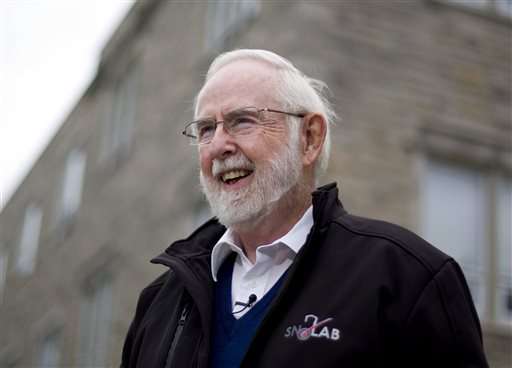
Arthur McDonald, a professor emeritus at Queen's University, poses for a photo at the university in Kingston, Ont., Tuesday, Oct. 6, 2015. McDonald and Takaaki Kajita of Japan are co-winners of the 2015 Nobel Prize in Physics Tuesday. McDonald and Kajita were honored for showing that the particles, called neutrinos, spontaneously change from one type to another. (Fred Chartrand/The Canadian Press via AP) -
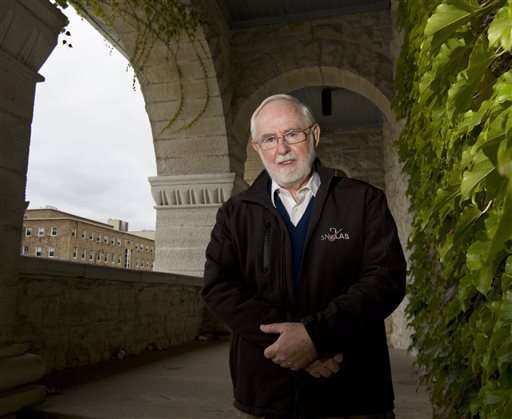
Arthur McDonald, a professor emeritus at Queen's University, poses for a photo at the university in Kingston, Ont., Tuesday, Oct. 6, 2015. McDonald and Takaaki Kajita of Japan are co-winners of the 2015 Nobel Prize in Physics Tuesday. McDonald and Kajita were honored for showing that the particles, called neutrinos, spontaneously change from one type to another. (Fred Chartrand/The Canadian Press via AP)
The Latest: phys.org/news/2015-10-latest-n … prize-stockholm.html
———
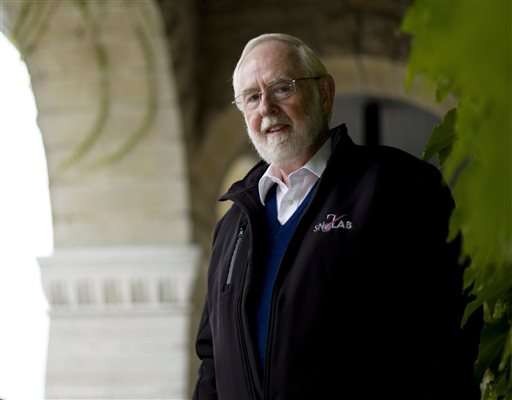
Nobel Committee Press Release
Metamorphosis in the particle world
The Nobel Prize in Physics 2015 recognises Takaaki Kajita in Japan and Arthur B. McDonald in Canada, for their key contributions to the experiments which demonstrated that neutrinos change identities. This metamorphosis requires that neutrinos have mass. The discovery has changed our understanding of the innermost workings of matter and can prove crucial to our view of the universe.
Around the turn of the millennium, Takaaki Kajita presented the discovery that neutrinos from the atmosphere switch between two identities on their way to the Super-Kamiokande detector in Japan.
Meanwhile, the research group in Canada led by
Arthur B. McDonald could demonstrate that the neutrinos from the Sun were not disappearing on their way to Earth. Instead they were captured with a different identity when arriving to the Sudbury Neutrino Observatory.
A neutrino puzzle that physicists had wrestled with for decades had been resolved. Compared to theoretical calculations of the number of neutrinos, up to two thirds of the neutrinos were missing in measurements performed on Earth. Now, the two experiments discovered that the neutrinos had changed identities.
The discovery led to the far-reaching conclusion that neutrinos, which for a long time were considered massless, must have some mass, however small.
For particle physics this was a historic discovery. Its Standard Model of the innermost workings of matter had been incredibly successful, having resisted all experimental challenges for more than twenty years. However, as it requires neutrinos to be massless, the new observations had clearly showed that the Standard Model cannot be the complete theory of the fundamental constituents of the universe.
The discovery rewarded with this year's Nobel Prize in Physics have yielded crucial insights into the all but hidden world of neutrinos. After photons, the particles of light, neutrinos are the most numerous in the entire cosmos. The Earth is constantly bombarded by them.
Many neutrinos are created in reactions between cosmic radiation and the Earth's atmosphere. Others are produced in nuclear reactions inside the Sun. Thousands of billions of neutrinos are streaming through our bodies each second. Hardly anything can stop them passing; neutrinos are nature's most elusive elementary particles.
Now the experiments continue and intense activity is underway worldwide in order to capture neutrinos and examine their properties. New discoveries about their deepest secrets are expected to change our current understanding of the history, structure and future fate of the universe.
More information: www.nobelprize.org/nobel_prize … ates/2015/index.html
© 2015 The Associated Press. All rights reserved.



















